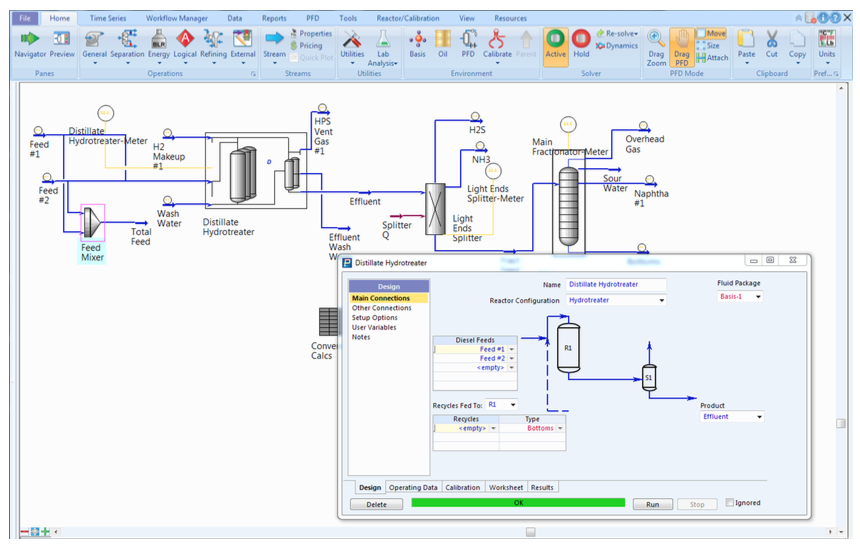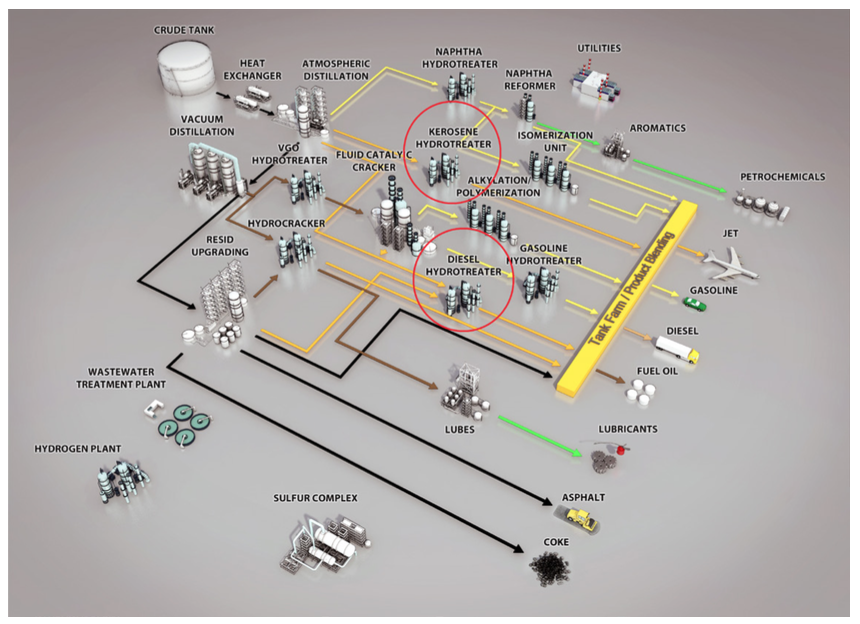DHTR-SIM™
Hydrotreating operations are key to adhering to finished product regulations and operating downstream units effectively. How will various feeds perform in your hydrotreater with respect to hydrogen consumption, effect on ultimate catalyst run length and product qualities? D HTR-SIM can help determine the answers to these important questions.
The D HTR-SIM model combines a detailed, rigorous kinetic simulation of the reactor and accurate product separation to produce the industry’s most trusted analytical tool for hydrotreating of kerosene or diesel feedstock, operating in either conventional mode or ultra-low sulphur mode. D HTR-SIM features the capability to rigorously model arsenic deposition on the catalyst and the resulting impact of this deactivation on catalyst performance.
D HTR-SIM is a valuable tool to determine run lengths with different feeds, monitor deactivation, develop a consistent set of LP yield vectors and establish more profitable operations.
Benefits:
- Determinethebesttradeoff of severity versus run length
- Determine the most profitable operation for a given hydrotreater unit given pricing for feeds, products, utilities, and unit shutdown
- Determinenewoperating parameters as sulphur specifications are reduced to meet tighter industry requirements
- Generateaconsistentsetofyield and property vectors for different feeds and severities
- Regeneratedatawhenthemodel or LP structure changes
- Predicthydrogenrequirements for changing process conditions
- Trainengineersandoperatorsnew to hydroprocessing by using the model to illustrate cause and effect through simulation runs
- Accurately monitor catalyst deactivation and determine time to shutdown
- Trackmassbalance,hydrogen consumption, and other key process indicators
- Compareactualyieldsversus predicted versus normalise
Features:
- A detailed simulation of the reactor section of the hydrotreater, including quenches and downstream flashes, as well as the recycle gas loop
- Rigorous kinetic representation of all key hydrotreating reactions – Hydrodesulphurisation (HDS), Hydrodenitrogenation (HDN), Hydrodemetallisation (HDM), olefin saturation, cracking and ring-opening
- Detailed heat balances to allow the calculation of bed temperature rises and resulting quench requirements • Accurate modelling of catalyst deactivation based on catalyst temperature, hydrogen partial pressure, feedstock qualities, and arsenic poisoning
- Detailed feed pseudo-component characterisation by paraffin, aromatic, and naphthene content and carbon number
- Estimation of multiple sulphur species and separate reaction pathways, providing accurate representation of diesel desulphurisation to ultra-low sulphur (Prediction of product polyaromatics profiles
- Two phase bed pressure drop calculation
- Reaction
RatingVisits1,889Redirects330Don't Miss Out! Get the Best Deal on this Software - Email Us Now!




